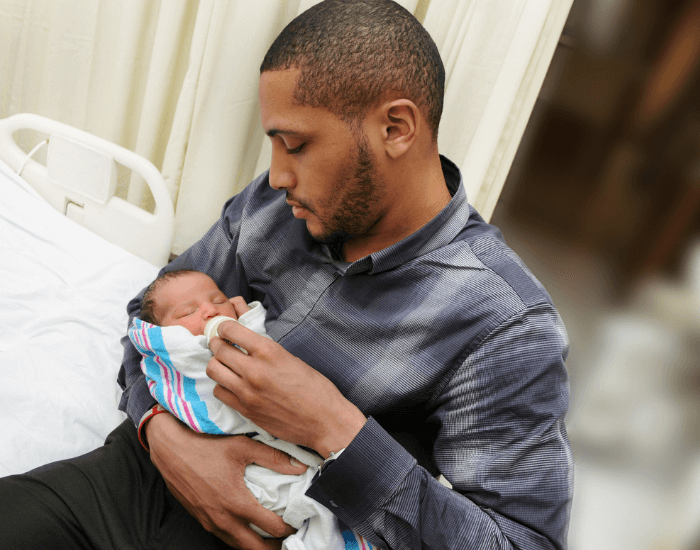
A DNA paternity test is considered the gold standard by both the scientific and legal communities when it comes to accurately establishing a relationship between a possible father and a child. Legal paternity tests are accepted worldwide as one of the world’s largest, most trusted DNA tests, and DNA Diagnostics Center (DDC) is qualified to answer questions and provide reliable information. So, to help you make an informed decision, here’s everything you need to know about a DNA paternity test.
Call Now: CALL NOW: 1.800.681.7162
What is a DNA Paternity Test?
Each person’s genetic fingerprint is unique, which makes this type of testing so reliable. A biological child shares 50% of their DNA with the biological father and 50% with the biological mother. A DNA paternity test compares a DNA sample from an alleged father and a DNA sample from a child (minor or adult) to determine whether the two individuals are likely to share or not share a father/child biological relationship. To be considered the biological father, the man being tested must match the child’s data at every marker tested (except for mutations, which are taken into account by geneticists when determining the probability of paternity).
What a DNA Paternity Test Can’t Determine
- Proof of relationship for possible biological connections other than paternal (aunt/uncle/sibling/grandparent)
- Information about ancestry
- Age of participants
- Race of participants

The DNA Paternity Testing Process
What Do You Need for a DNA Paternity Test?
A DNA paternity test requires only a DNA sample from the possible father, the child in question, and the child’s mother (her participation is optional but recommended).
How Does a DNA Paternity Test Work?
All paternity tests have two parts: Collecting the DNA from test participants and then testing and analyzing the samples at the lab.
How DNA is Collected
- DNA for paternity tests comes from participants’ cheek cells, collected using a simple, painless swab.
- Each participant is provided with four swabs. Using one at a time, the tip of the swab is rubbed firmly on the insides of the cheeks to collect DNA. An adult can swab a child or infant.
- Swabs are placed in paper envelopes; paper containers allow the organic material on the swabs to “breathe” and prevent mold contamination as they travel to the lab. If swabs seem a little too “wet,” wave them in the air for a few minutes to dry them a bit before putting them in the paper envelopes.
- In some rare postnatal cases, a blood sample may still be used for DNA, but cheek swabs are now the norm. A DNA swab test or blood test is equally reliable as the other.
How the Test Works in the Lab
- DNA is extracted from the cells of each participant and then amplified to make the sample more workable.
- At least 16 STR genetic markers for each participant are analyzed (DDC’s baseline is 20) using a method called Short Tandem Repeat (STR) Analysis to capture the genetic information for each marker.
- A geneticist takes this data and calculates the probability that the man tested is the biological father of the child tested.
Call Now: CALL NOW: 1.800.681.7162
Can a DNA Paternity Test Be Performed at Home?
A DNA home paternity test can be done if you only want results for your peace of mind and information. If you need results for any type of legal reason, such as child support or custody, then you should order a legal, witnessed paternity test instead.
For a home test:
- You can order a kit online or at your corner drugstore.
- When you get a kit at the store, you pay the retailer for the kit and then pay a separate fee to the lab once you’re ready to test.
- Swab at home, register the kit online and then send the swabs directly to the lab.
- When ready, the results report is posted to a secure online account or can be delivered via mail. For security reasons, reports are never delivered via email.
PRO TIP: Your DNA kit from DDC comes with a postage-paid USPS mailer. Samples sent in this mailer can take ten business days to reach our lab. If you want results faster, pay a little extra to send samples via USPS Priority Mail, FedEx, or UPS.
Where to Get Paternity Testing
For the results of a paternity test to be court-admissible, DNA collection and submission to the lab need to be supervised by an approved disinterested third party. Here’s how it works:
- Call the lab directly to request a legal test.
- The lab makes an appointment (or appointments) at an approved DNA collection facility near you.
- A DNA test kit is then sent directly to the facility.
- Participants show up at the designated times (they don’t have to be there at the same appointment).
- The DNA collector checks IDs, takes photos, and supervises (or performs) DNA collection.
- The DNA collector fills out the necessary paperwork and mails samples to the lab.
- When ready, the results report is posted to a secure online account or can be delivered via mail. For security reasons, reports are never delivered via email.
Because the chain of custody is maintained throughout the DNA collection process and participant identities are verified, only a legal test like this can provide court-admissible results.
How Long Does a Paternity Test Take?
Once samples arrive at the lab, the standard turnaround time for a paternity test at DDC is two (2) business days. However, 1-day results and same-day results are available at an additional fee.
How Accurate Are the Results?
At DDC, each test is performed by two teams to ensure accuracy, so you can be sure results are accurate for the samples we are provided to test. As mentioned, results for legal, witnessed paternity tests by an accredited lab are accepted as proof of paternity by courts and can be used for immigration purposes.
IMPORTANT FACT: The only difference between a home and a legal paternity test is how the DNA is collected. Once samples arrive at the lab, the testing process is identical.
How to Interpret the Results of a Paternity Test
Accreditation mandates require labs to use specific legal language when presenting a report for a DNA paternity test. Here’s what it means in more straightforward language.
If a man IS considered the biological father, the report contains the following:
- A conclusion statement that says that the alleged father is not excluded as the biological father of the tested child. This means he can’t be statistically ruled out and is considered to be the biological father of the child.
- A Combined Paternity Index (CPI) shows the odds that the man is the child’s father. For example, a CPI of 43,110,000 means there is a 43,110,000 to 1 chance that someone other than the tested man is the biological father instead.
- A Probability of Paternity is the chance—given as a percentage—that the man is the father. It’s generally 99.999% or higher for a standard paternity test, which would read: There is a 99.999% chance that this man is the child’s biological father.
If a man IS NOT considered the biological father, the report contains the following:
- A conclusion statement that says the alleged father is excluded as the biological father of the tested child. This means he is not considered the biological father.
- A Combined Paternity Index (CPI) shows the odds that the man is the child’s father. For an exclusion, this number is always 0.
- A Probability of Paternity is the chance—given as a percentage—that the man is the father. For an exclusion, this number is always 0.

How Much is a Paternity Test?
A paternity test performed at an accredited laboratory costs $130 to $200 if you collect DNA at home. If you need results for court, the cost is $300 to $500.
DNA Paternity Testing While Pregnant
You can get a paternity test while pregnant, and the safest way to do so is with a Non-Invasive DNA Prenatal Paternity test (NIPP). This test requires only a blood sample from the mother and a simple cheek swab from the possible father. It can be performed as early as seven (7) weeks into the pregnancy.
- At a doctor’s office or clinic, the mother’s blood is drawn, and the possible father’s DNA is collected via a buccal (cheek) swab.
- Free-floating DNA from the baby is contained in the mother’s bloodstream; those cells are isolated from the mother’s, and a DNA profile for the unborn child is obtained.
- The baby’s DNA profile is compared with both the father’s and the mother’s, and a probability of paternity can be established.
Choose DNA Diagnostic Center for Paternity Testing
We’ve been the most trusted resource for DNA paternity testing since 1995. DDC processes millions of DNA samples annually, providing thousands upon thousands of accurate results for paternity tests, relationship tests, fertility tests, and more. Call now or email [email protected] today for paternity testing and get the results you need.
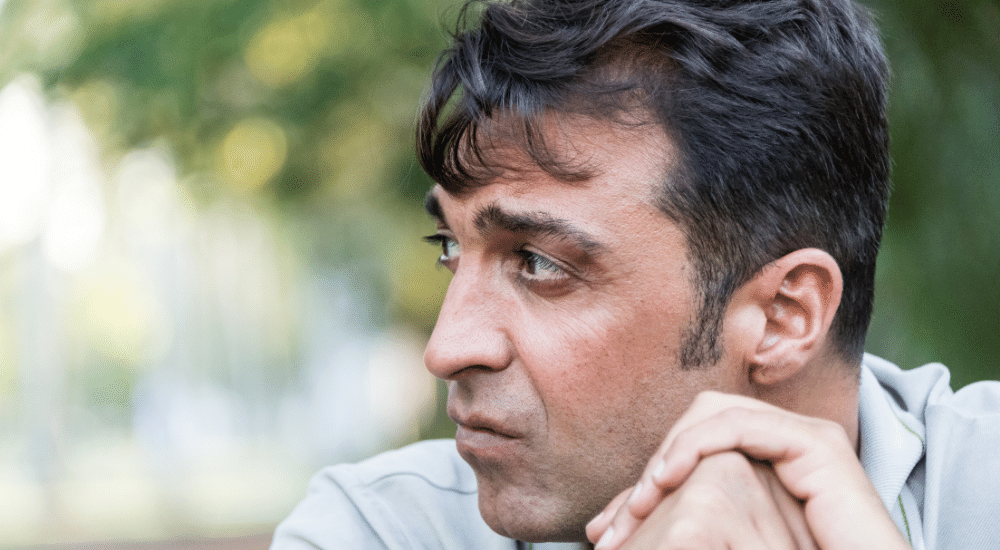
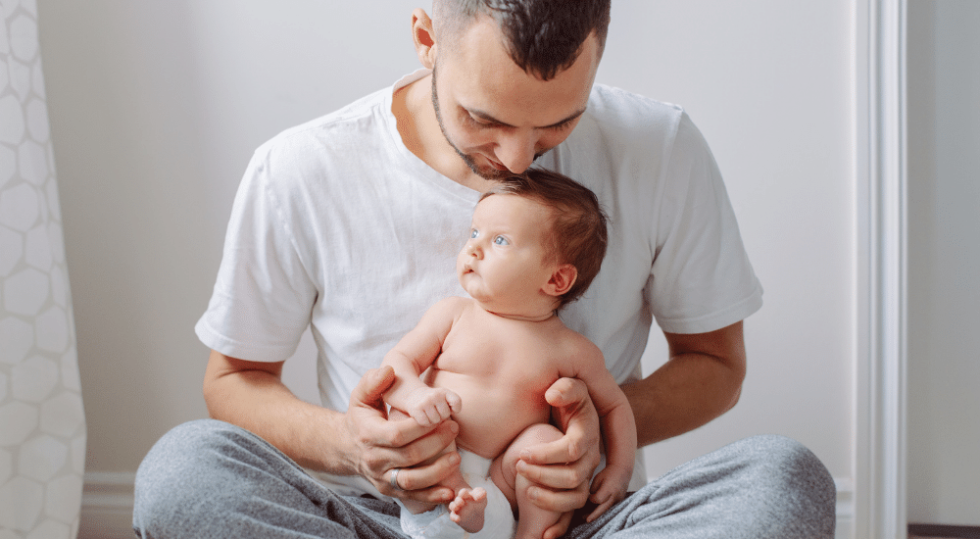
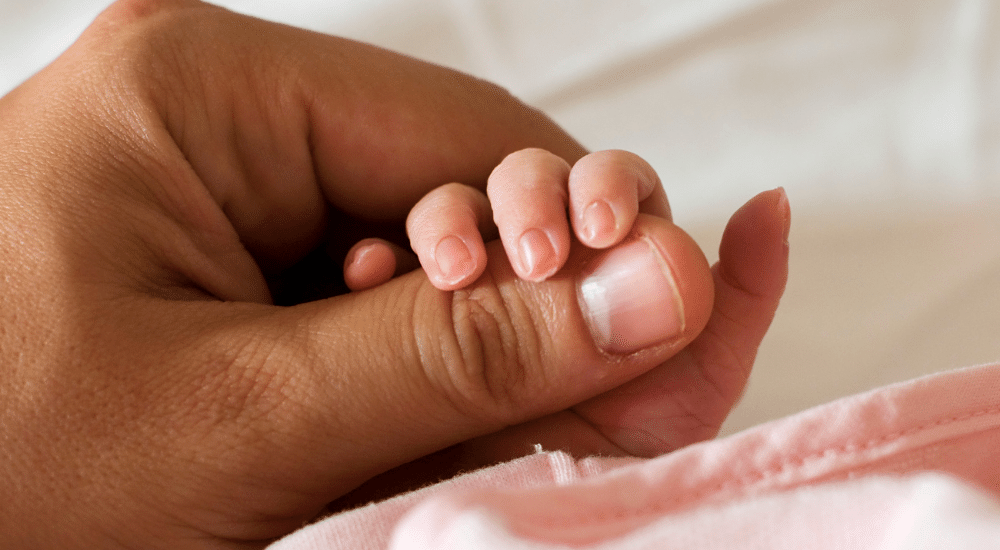


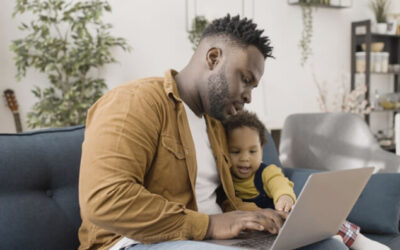



A child was tested with my father in law to establish paternity in another country. For legal reasons my husband wants to get a test done. Can he just test himself as we have the result of the child and father in law or will the child have to be tested again?
Hi, Erica. Just to clarify. Did the child do a grandparent test with your father-in-law? I’m assuming yes. So if your husband needs legal paternity results with that same child, both he and the child will need to test. Data from the grandparent test cannot be used for comparison in a new test, especially since the grandparent test was performed in a different country.
My sons dad and I did an in home test in April and sent the samples through the mail. When we got the results back there were no names listed just like it said there wouldn’t be. I am the biological mother and found out there may have been another test done. The results include both my sons name and the alleged fathers name. It states the sample was collected in October.
Is it possible that the same samples could have been used from the April test?
As the biological mother do I have access to the test results from the sample from October even though I was not there?
How could a test be done without my consent for my son who is less than a year old?
Hi, Camille. Let me answer each of your questions one by one.
(1) It is not possible that samples from an April test would be used for an October test. We destroy samples shortly after testing is complete.
(2) The October test is tricky to pin down. If the test was ordered directly through us, it could only have names on it if it was a legal, witnessed test. But if it was ordered through a third-party partner, an at-home test might still have names. I would have to see a copy of this report to be able to tell which type of test was performed. If the October test was also a home test, there is no way of knowing if the possible father submitted your son’s DNA or someone else’s, and since you didn’t participate, we cannot provide access.
(3) For home tests, the burden is on the test participants to ensure that all proper consents for testing have been provided. For legal tests, we require proof of authorization for testing.
Ok how do I go about finding out which test it was.
Do you have access to the results report? The first step is to verify that such a report exists.
My boyfriend got a dna test done and the results were 60% what does it mean. Supposedly the uncle is the father of the child?
Hi, Esther. Without seeing the report it’s impossible for me to comment. There simply aren’t enough details. Sorry!
If the DNA samples of 2 children with different mothers are sent in to the lab, is it possible for an at-home paternity test to determine if the 2 children are half-siblings or not? (Manning do they share a father?)
Hi, Jack. A paternity test doesn’t determine half-sibling relationships, no. You would want to do a half-sibling vs. unrelated test. Contact us at 800-681-7162 (M-F, 8 AM to 8 PM Eastern) for more information.
Hello I recently found out that one or both of my children which I am the father on the birth certificates and of course in my heart. But I need piece of mind are they mine. I currently have been effected by the pandemic and my job closed so I am not financially able to afford a test is there any type of financial assistance or payment plans that can be made to help me with having myself and my 2 daughters age 19months and 5months tested to prove if I am their Biological father or not?
Hi, AJ. Please contact us directly at 800-681-7162 (M-F, 8 AM to 8 PM Eastern) to discuss options.
I would like to determine if I share the same grandfather with a cousin of mine. Is that possible to do?
Hi, Layne. Not with the tests we offer, no. You may be able to get some clues through ancestry testing with public data that links you to possible relatives.
In a test result for siblings outcome 19 out of 21 matched markers, is considered full or half Sibling?
Hi, Gabriela. Without seeing the data I cannot comment definitively. I suggest you go by what the conclusion statement on your report says and ask the lab where you tested for clarification.
The man that I know to be my father was murder when I was seven but I believe he wasn’t my mom was 13 when she had me and was dating celebrity who’s a rapper very well know my,and he did a interview talking about how he got a girl pregnant in highschool and that child would be in it’s 30’s I’m 39 and she told him she had abortion she hid her pregnancy her hole 9months I’m looking for clearity n peace in my life I need help I just want to be healed from my childhood life trauma.
Hi, Erica. If the possible father is willing to be tested, then we can help. Otherwise, we cannot.
The man I believe to be my father died many years ago but I have been told he was not my biological father. The only thing I have that might have his DNA on it are some wire stitches from a surgery he had in the 1960s. Is it possible that there could be useable DNA on those stitches.
Hi, Debbie. I suggest you contact us directly with questions about unusual sample types: 800-681-7162 (M-F, 8 am to 8 pm Eastern).
Do I have to be 18 to take a paternity test? I read somewhere that you have to wait 60 days after you turn 18 or no declaration of paternity would test you.
You need to be 18 to do a paternity test in the United States without parental permission.
Will a paternity test be accurate if I have been treated for cancer and have gone thru A autologous stem cell transplant?
Stem-cell transplants can affect results for a paternity test. You can learn more here: https://dnacenter.com/blog/problems-with-transfusions-transplants-paternity-tests/
Does your office keep records on file for someone who lost results while moving? I had a DNA test about 15 years ago and can’t find the paperwork that was mailed to me. I know the results I just lost the paperwork with results on them
Hi, Carlos. For security reasons, we keep records for a limited time only. For details, see our Privacy Policy: https://dnacenter.com/privacy-policy/
Hello i need to test for my daughter with one guy but he doesn’t want to come for DNA and i can get samples to do by my self can you please tell me without second person can we do? And what samples we need for?
Hi! If a possible father doesn’t want to test, it is possible for you to test your daughter with one or both of the possible father’s parents, if they’re willing.
So do I get put on child support for asking for a dna test ? That makes zero sense. I want to know if it’s my baby for sure.
Hi, Lu. Without knowing all the details, I cannot provide an accurate answer. I suggest you consult with a family-law attorney.
For those who are abroad how can we get collection kit,pay for test and send the sample back and again get the results.
Hi, Nelson. You can order online since we ship to nearly everywhere around the world: https://cart.dnacenter.com/
DDC has been wonderful. We need a post mortem paternity test and they helped us with everything! Best lab ever. They were very professional, understanding, and very concerned.
Thanks, Nick!
Need to have dna test for my daughter for father rights
Hi, Nicolas. One of our DNA experts will be happy to arrange testing for you. Contact us at 800-929-0847 (M-F, 8 AM to 8 PM Eastern).